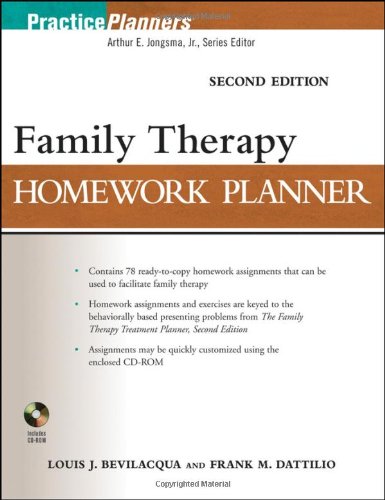دانلود کتاب Family Therapy Homework Planner, Second Edition - Original PDF
Author:
Louis J Bevilacqua, Frank M. Dattilio, Arthur E. Jongsma Jr.
0 (0)
توضیحات کتاب :
Features new and updated assignments and exercises to meet the changing needs of mental health professionals The Family Therapy Homework Planner, Second Edition provides you with an array of ready-to-use, between-session assignments designed to fit virtually every therapeutic mode. This easy-to-use sourcebook features: New and updated homework assignments consistent with evidence-based therapies and grouped by presenting problems including adoption, communication issues, interracial family problems, sexual abuse, and school concerns 78 ready-to-copy exercises covering the most common issues encountered by families in therapy, such as family-of-origin interference, depression in family members, divorce, financial conflict, adolescent and parent conflicts, traumatic life events, and dependency issues Expert guidance on how and when to make the most efficient use of the exercises Assignments that are cross-referenced to The Family Therapy Treatment Planner, Second Edition—so you can quickly identify the right exercise for a given situation or problem A CD-ROM that contains all the exercises in a word-processing format—allowing you to customize them to suit you and your clients’ unique styles and needs Additional resources in the PracticePlanners® series: Treatment Planners cover all the necessary elements for developing formal treatment plans, including detailed problem definitions, long-term goals, short-term objectives, therapeutic interventions, and DSMTM diagnoses. For more information on our PracticePlanners® products, including our full line of Treatment Planners, visit us on the Web at: www.wiley.com/practiceplanners
سرچ در وردکت | سرچ در گودریدز | سرچ در اب بوکز | سرچ در آمازون | سرچ در گوگل بوک
126 بازدید 0 خرید










